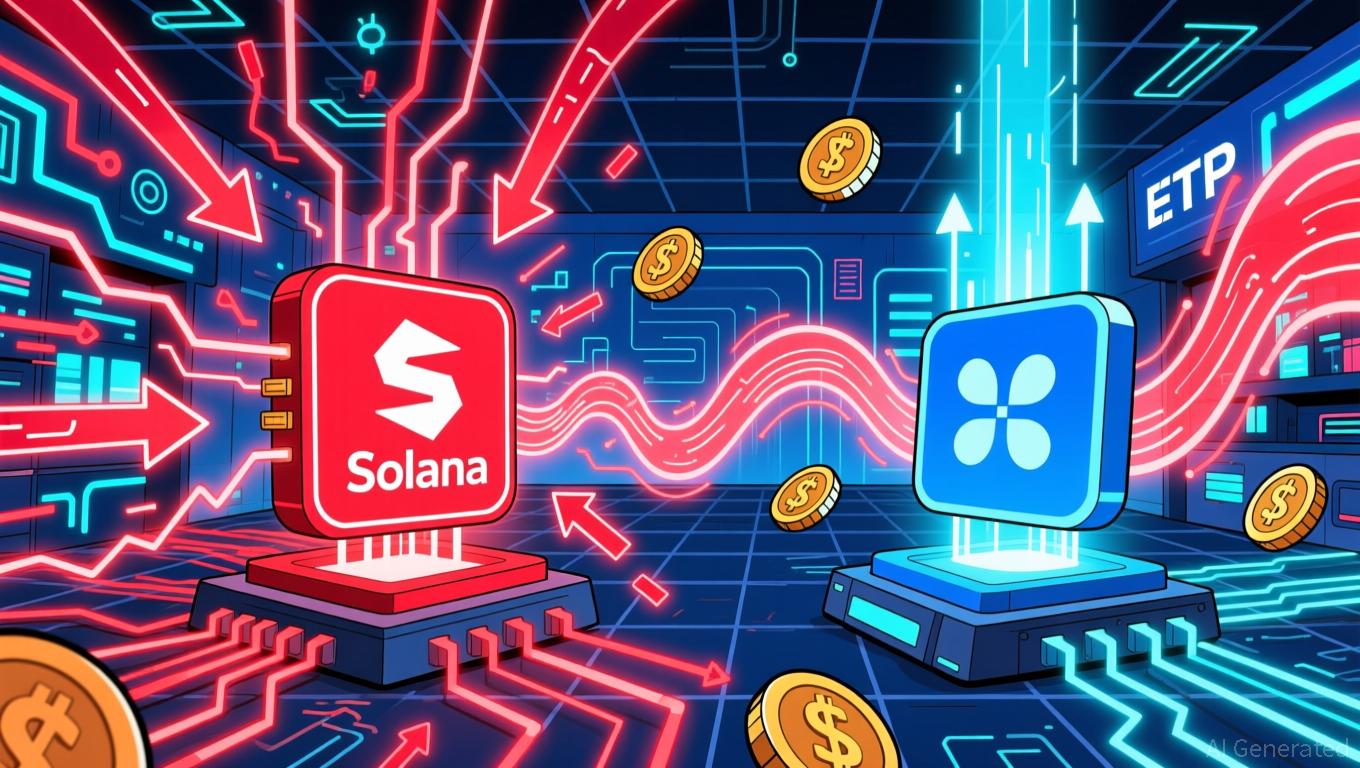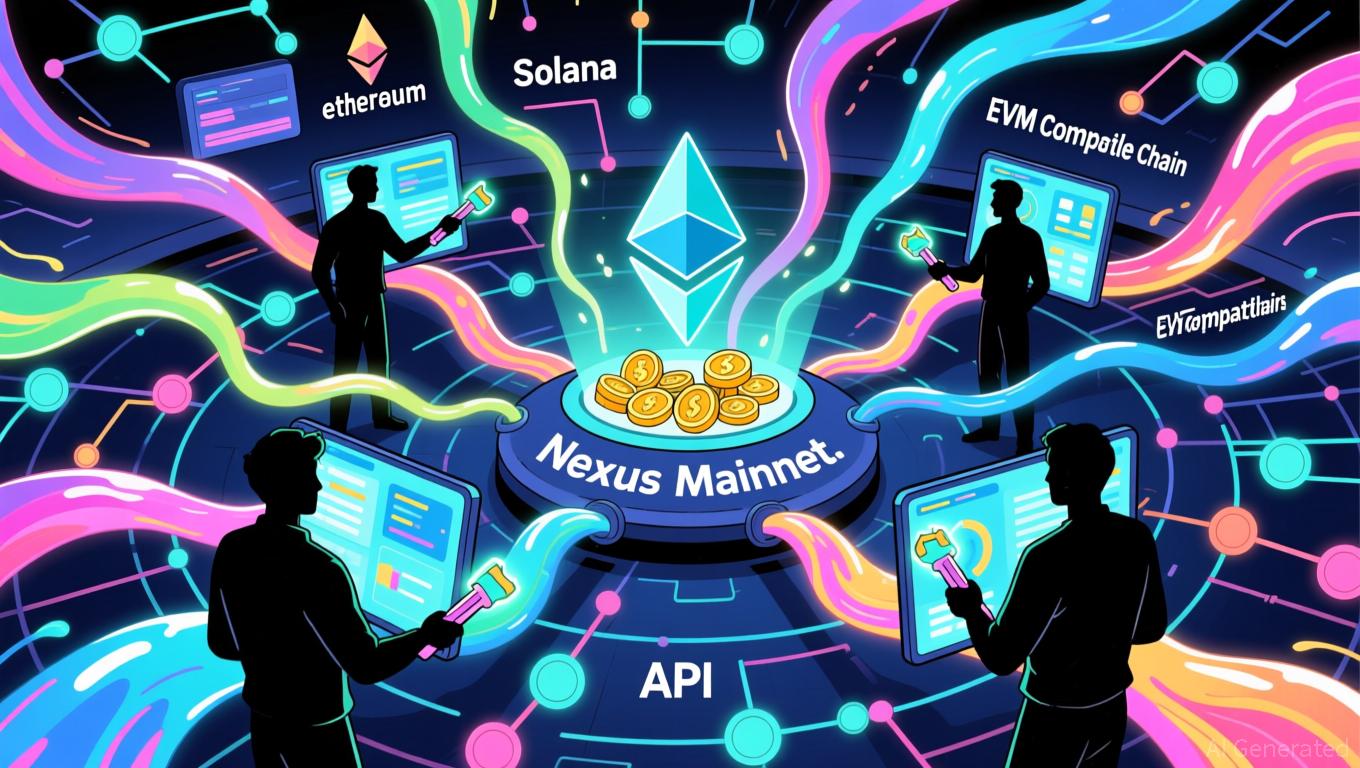South Korea’s Naver and Dunamu Join Forces to Take On US Stablecoin Leaders Through AI and Blockchain Innovation
- Naver and Dunamu’s $6.8B merger creates a $13.6B fintech entity to boost AI/blockchain integration, targeting global financial infrastructure innovation. - The merged firm plans a Korean won-pegged stablecoin to challenge US dollar-backed tokens, aligning with national sovereignty goals but facing Bank of Korea regulatory barriers. - A $7B investment in AI/blockchain research and talent aims to position South Korea as an Asian tech leader, despite stalled legislation and global stablecoin liquidity gaps.
Naver Corp. and Dunamu Inc. are poised to transform South Korea’s fintech and cryptocurrency sectors after confirming a historic merger that will channel $7 billion into AI and blockchain projects,

This merger highlights South Korea’s determined efforts to establish a homegrown stablecoin market, a key initiative for President Lee Jae Myung to challenge the prevalence of U.S. dollar-based tokens. The two firms intend to introduce a stablecoin tied to the Korean won,
This investment signals a calculated move toward merging AI and blockchain technologies.
This development also escalates competition with KakaoBank, which has already moved its own won-backed stablecoin project into the development phase.
Regulatory ambiguity continues to pose significant obstacles.
As both companies get ready to officially announce the merger, the outcome will depend on their ability to balance innovation with regulatory demands. The merged group’s success in navigating South Korea’s conservative monetary policies while competing with international tech leaders will be crucial in determining whether it can truly transform the nation’s financial industry.
Disclaimer: The content of this article solely reflects the author's opinion and does not represent the platform in any capacity. This article is not intended to serve as a reference for making investment decisions.
You may also like
Ethereum News Update: Amundi’s Integrated Approach Connects Blockchain with Conventional Financial Regulations
- Amundi, Europe's largest asset manager, launched its first Ethereum-based tokenized money-market fund, enabling 24/7 settlements and transparent record-keeping via blockchain. - The hybrid model, developed with CACEIS, combines traditional fund operations with blockchain-based ownership, preserving regulatory compliance while expanding investor access. - Ethereum's dominance in stablecoin and RWA transfers ($105.94B in 30 days) underscores its role in accelerating tokenization, with Amundi positioning it

XRP News Today: XRP ETFs Drive Price Increases, While Solana ETFs Ease Selling Pressure
- XRP ETFs raised $587M in inflows since late November, outpacing Solana's $568M as investors favor altcoins with regulatory clarity and utility. - Bitwise XRP ETF's $107M debut and zero-fee strategy drove momentum, while Solana ETFs faced $156M weekly outflows due to network reliability concerns. - XRP's inflows acted as a "battering ram" pushing prices above $2.27, contrasting Solana's ETFs which merely dampened sell pressure without reversing its decline. - Analysts predict XRP could reach $3 by Decembe

The Federal Reserve's Change in Policy and Its Impact on Alternative Cryptocurrencies Such as Solana
- Fed's 2025 policy shifts, including rate cuts and stablecoin regulations, are reshaping altcoin markets by altering liquidity and risk appetite. - Solana's Alpenglow upgrade (150ms finality, 1M TPS) addresses scalability issues, aligning with Fed's AI-driven infrastructure focus despite network reliability concerns. - Institutional inflows into Solana ETFs ($100M AUM) contrast with retail caution (78% HODLers in red), highlighting divergent risk perceptions amid 30% price corrections. - Divergent ETF flo

Avail's Intent-Driven Nexus Addresses the Issue of Fragmented Liquidity Across Chains
- Avail launches Nexus Mainnet, a cross-chain solution unifying liquidity across Ethereum , Solana , and EVM networks. - The intent-solver model enables seamless asset transfers without technical complexities, streamlining user experiences. - Developers gain modular tools for multichain integration, reducing costs as cross-chain liquidity demand grows. - Nexus abstracts execution layers, offering unified balances and execution while addressing fragmentation challenges. - With $50B+ in cross-chain activity
